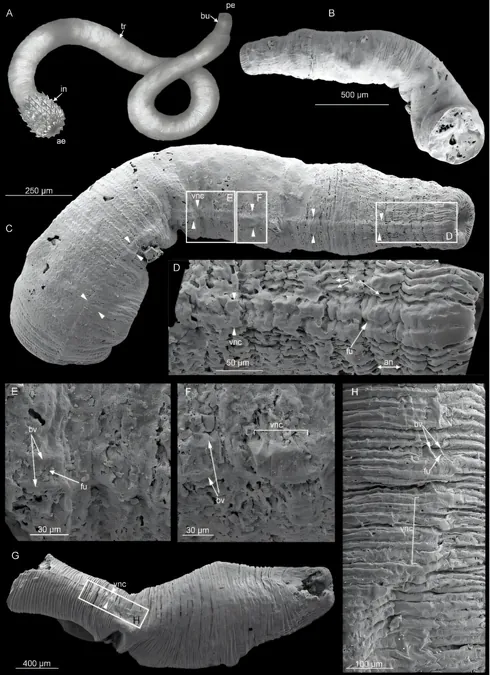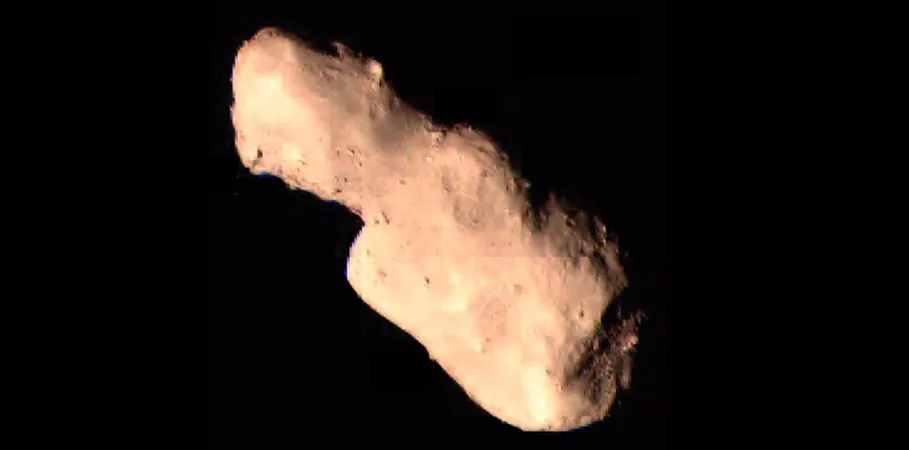
Groundbreaking Fossil Discovery Reveals Secrets of Animal Nervous System Evolution!
2025-01-10
Author: Charlotte
Introduction
An international team of scientists has made a groundbreaking discovery that could change our understanding of the evolution of nervous systems in animals, specifically focusing on the ventral nerve cord—a crucial element of the central nervous system. This remarkable breakthrough pertains to ecdysozoan animals, which encompass a vast array of species, including insects, nematodes, and the peculiar priapulid worms.
Study Details
The findings, detailed in a study titled "Preservation and early evolution of scalidophoran ventral nerve cord," published in Science Advances, shed light on these anatomical features from the basal Cambrian period—a pivotal time in the history of life on Earth.
Research Team
Led by a diverse team of experts including Dr. Deng Wang from Northwest University, Dr. Jean Vannier from Université de Lyon, Dr. Chema Martin-Durán from Queen Mary University of London, and Dr. María Herranz from Rey Juan Carlos University, the researchers meticulously examined incredibly well-preserved fossils from significant Cambrian deposits. Among these fossils are early representatives of the Scalidophora subgroup of Ecdysozoa, providing unprecedented insights into the architecture of ancient nervous systems.
Ecdysozoan Diversity
Ecdysozoans are not just limited to arthropods and nematodes; they also include lesser-known groups such as kinorhynchs, affectionately dubbed “mud dragons,” and priapulids, colloquially known as “penis worms.” Their central nervous systems have long posed intriguing questions for scientists trying to unravel the evolutionary connections among these diverse organisms.
Questions Raised
The study poses vital questions about the configuration of the ventral nerve cord. For instance, while priapulids possess a single ventral nerve cord, loriciferans and kinorhynchs have developed paired nerve cords, with kinorhynchs also featuring paired ganglia. This raises the tantalizing question: Did the ancestral ecdysozoan possess a single or paired ventral nerve cord?
Evolutionary Insights
Moreover, the resemblance in nervous system design between loriciferans, kinorhynchs, and arthropods suggests potential evolutionary convergence, hinting at either shared ancestry or similar adaptations. The Scalidophorans' appearance in the early Cambrian marks them as a crucial lineage for exploring these evolutionary developments.
Fossil Discoveries
Through their investigation of fossils from prominent formations such as the Fortunian Kuanchuanpu Formation (featuring species like Eopriapulites and Eokinorhynchus), the Chengjiang Biota (including Xiaoheiqingella and Mafangscolex), and the Wuliuan Ottoia prolifica, the team identified elongated structures that align closely with the modern ventral nerve cords of priapulids.
Expert Opinions
“The structural similarities we observe provide compelling evidence for the preservation of these ancient nerve cords,” stated Dr. Wang. Their research reinforces the idea that a single ventral nerve cord likely represents an ancestral trait for scalidophorans and their evolutionary relatives.
Phylogenetic Analysis
Phylogenetic analyses point toward the fascinating conclusion that the common ancestor of all ecdysozoans probably had a single ventral nerve cord. The paired nerve cords found in arthropods and other groups may have evolved separately, thus introducing derived characteristics over time.
Connections to Body Segmentation
The study also draws important connections between the evolution of nerve cords and body segmentation. Observations reveal that loriciferans, kinorhynchs, and panarthropods display varying degrees of segmentation, suggesting that changes in these physical structures may have co-evolved with nervous system adaptations.
Conclusion
Dr. Herranz added, “The evolution of paired nerve cords likely enhanced motor coordination, especially in segmented animals. The transition from the Precambrian to the Cambrian was marked by significant changes in both the nervous and muscular systems, culminating in the development of appendages that allowed for more complex locomotion.”
This enlightening discovery not only enriches our comprehension of ecdysozoan evolution but also underscores the invaluable role the fossil record plays in answering vital questions regarding early animal development. By correlating nervous system structures with broader evolutionary trends, the study illuminates how various ecdysozoan lineages originated and adapted to their respective environments over millions of years.
What other astonishing secrets of evolution lie buried in the earth, waiting for the right team of scientists to uncover them? Stay tuned as we delve deeper into the intricate history of life!









 Brasil (PT)
Brasil (PT)
 Canada (EN)
Canada (EN)
 Chile (ES)
Chile (ES)
 Česko (CS)
Česko (CS)
 대한민국 (KO)
대한민국 (KO)
 España (ES)
España (ES)
 France (FR)
France (FR)
 Hong Kong (EN)
Hong Kong (EN)
 Italia (IT)
Italia (IT)
 日本 (JA)
日本 (JA)
 Magyarország (HU)
Magyarország (HU)
 Norge (NO)
Norge (NO)
 Polska (PL)
Polska (PL)
 Schweiz (DE)
Schweiz (DE)
 Singapore (EN)
Singapore (EN)
 Sverige (SV)
Sverige (SV)
 Suomi (FI)
Suomi (FI)
 Türkiye (TR)
Türkiye (TR)
 الإمارات العربية المتحدة (AR)
الإمارات العربية المتحدة (AR)